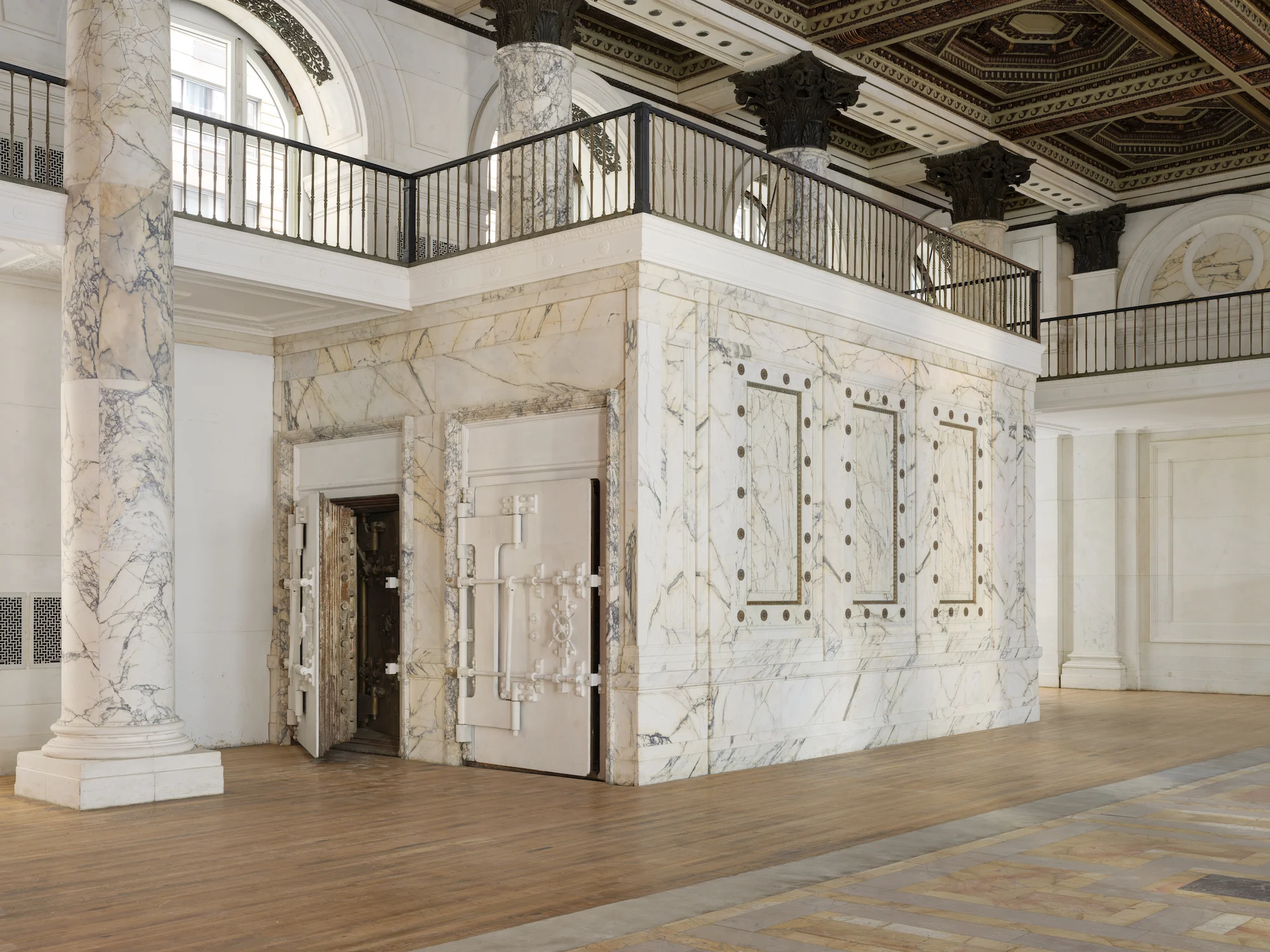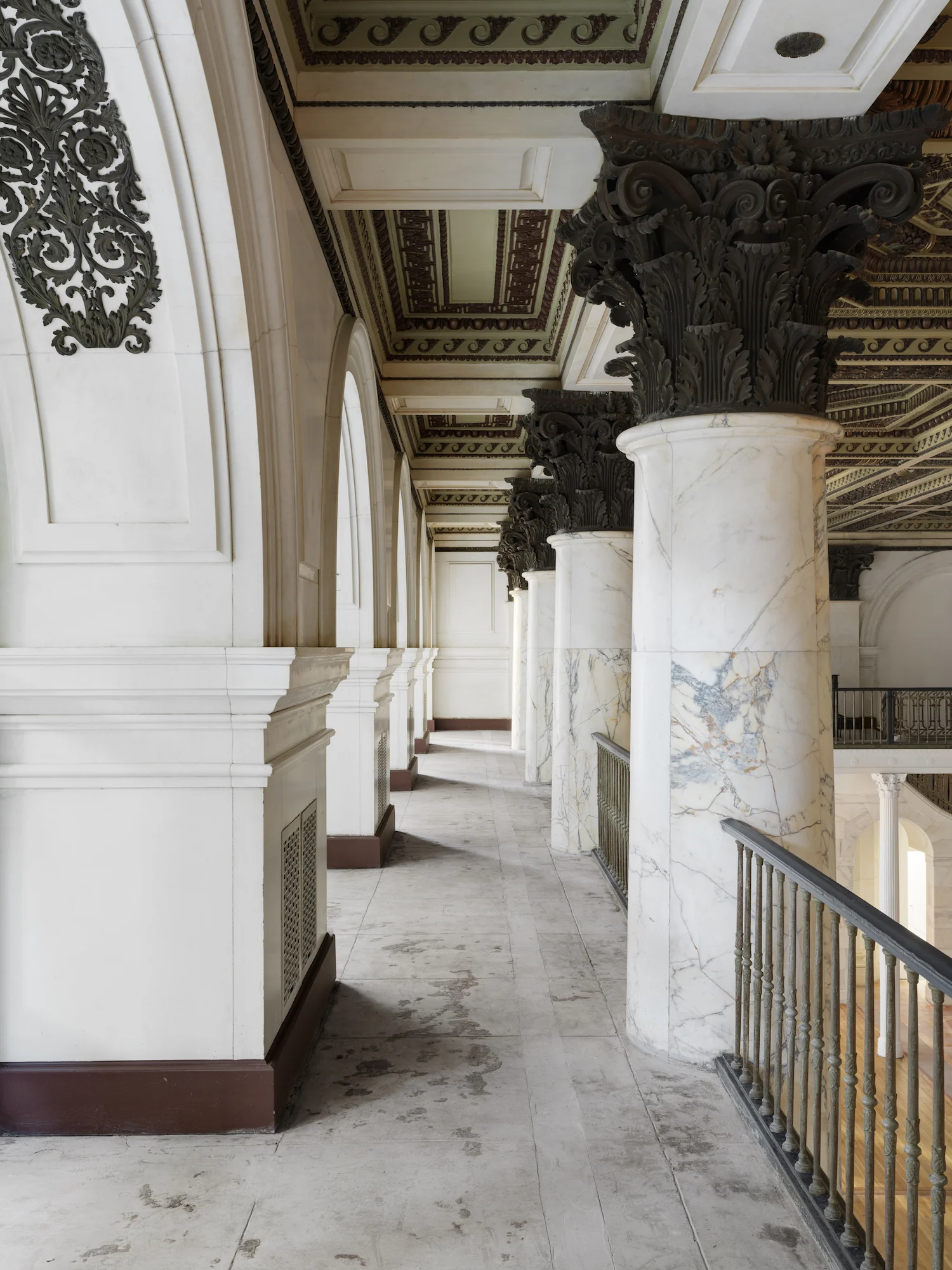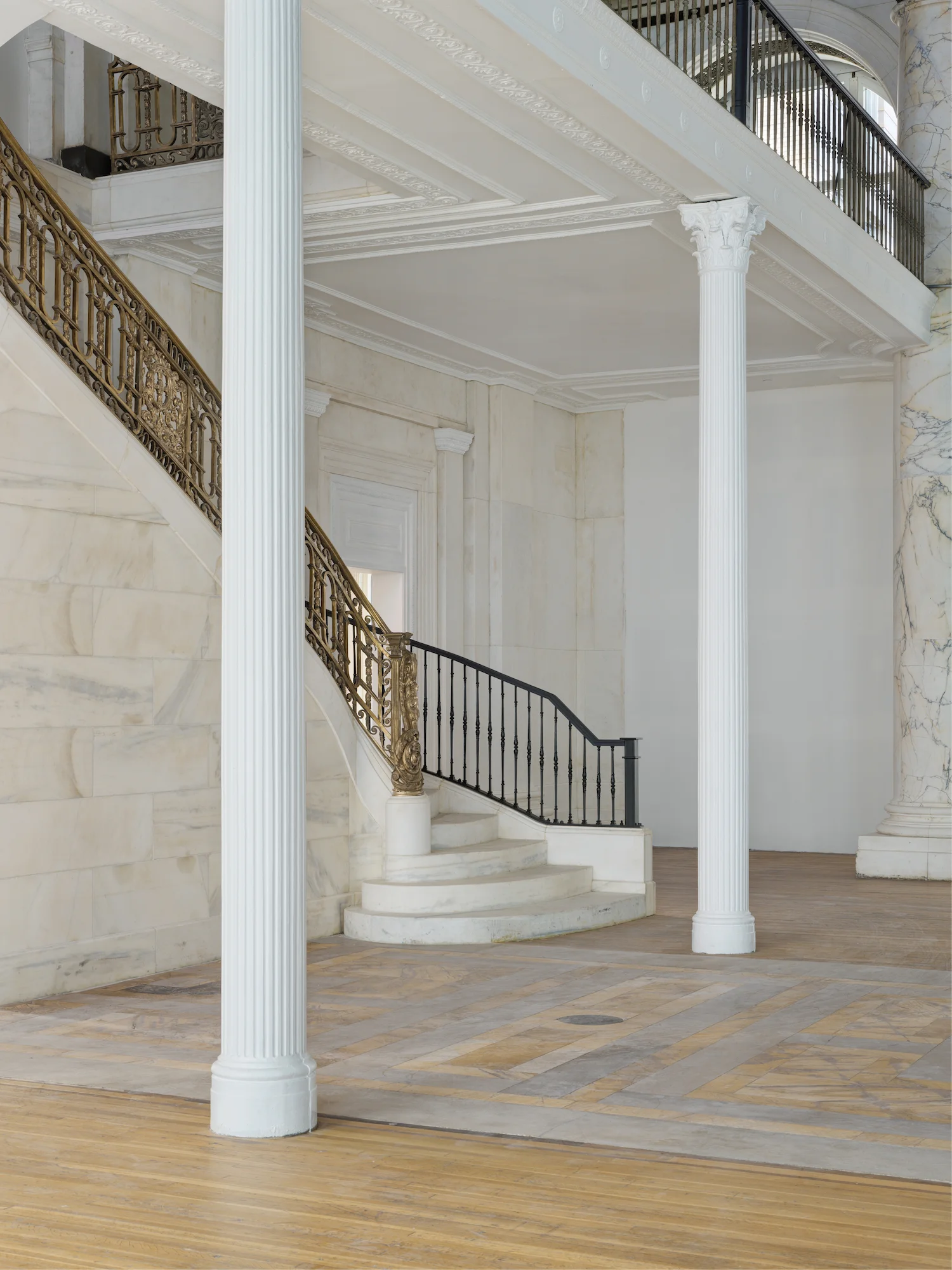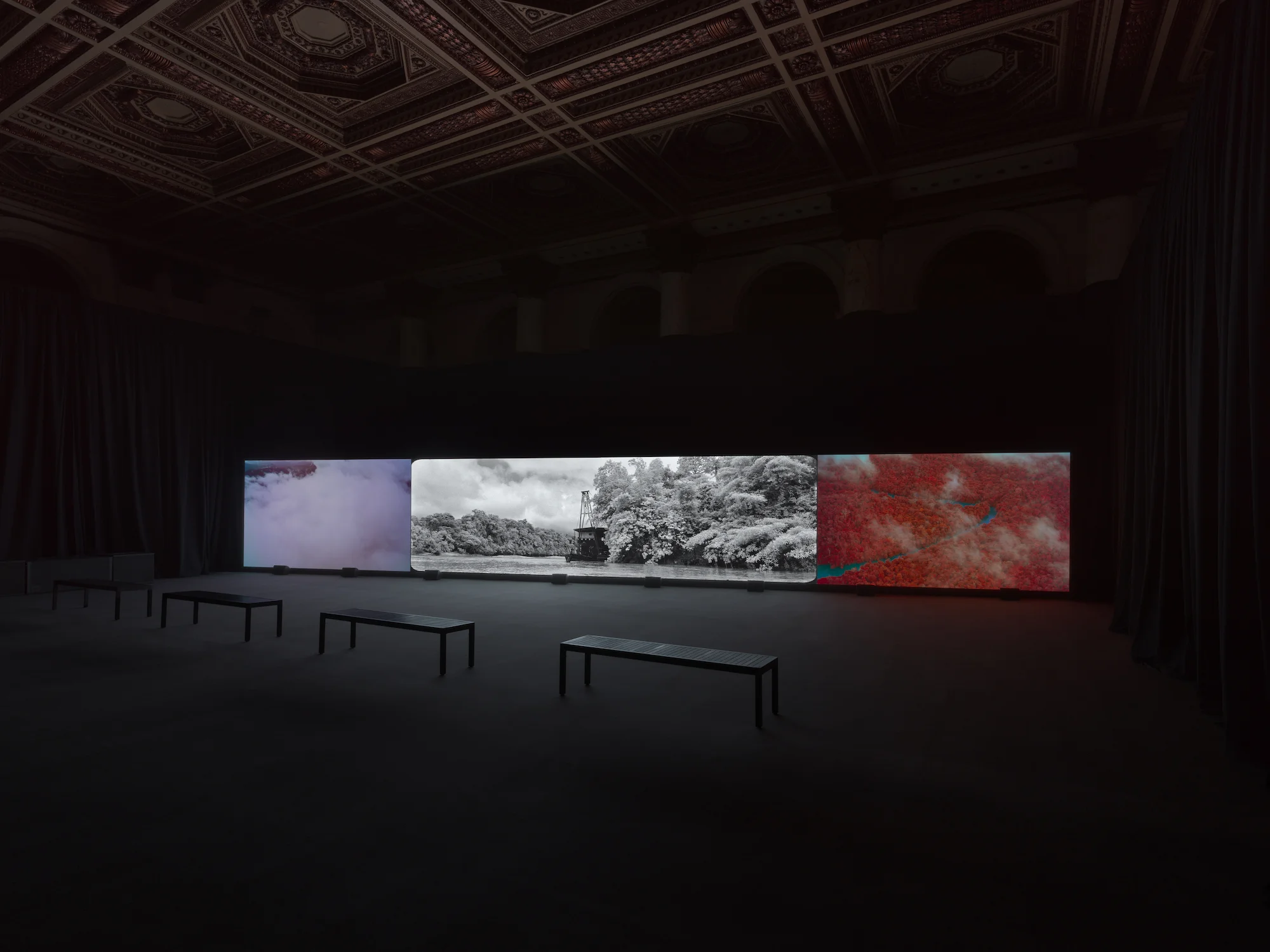There is something of an arms race between New York City art galleries, with the likes of David Zwirner, Hauser & Wirth, and Pace, among other peers, pursuing ground-up spaces designed by the likes of Selldorf Architects and Bonetti/Kozerski. In January, Jack Shainman Gallery similarly expanded its footprint, but with a comprehensive restoration. Led by Gloria Vega Architecture Studio and preservation specialist Higgins Quasebarth & Partners, the project transforms a decades-vacant McKim, Mead & White—designed banking hall into a 20,000-square-foot gallery and operations space.

The banking hall's marble-clad vaults are still intact. Photo © Dan Bradica, courtesy Jack Shainman Gallery
The banking hall is located within the New York Life Insurance Company Building (1897), now known as the Clock Tower Building, a landmark Renaissance Revival structure at 108 Leonard Street in Tribeca. This public-facing space is monumental in scale, with nearly 30-foot-high, gilded coffered ceilings, and towering white marble Corinthian columns; all of which is daylit by three-story arched windows. However, those stately details began their long decline in the middle of the 20th century, when the building began to host a range of federal and state government agencies, before being sold to the city in 1967. The Department of Motor Vehicles parked its offices in the banking hall, and it languished in ignominy: synthetic linoleum flooring abounded; many of the marble details were painted over, repeatedly; and other historic elements were left to decay.
The building was sold to private developers in 2013 and converted into luxury residences, though the banking hall remained vacant until the 40-year-old Jack Shainman Gallery’s purchase of the space for just under $20 million in 2022. The gallery still maintains spaces in Chelsea and in Kinderhook, New York, but the Tribeca venue will now function as the new flagship.

1

2
The banking hall is wrapped by a mezzanine and Corinthian columns (1); marble flooring lines the main floor (2). Photos © Dan Bradica, courtesy Jack Shainman Gallery
While the building suffered under municipal ownership, restoring and upgrading the would-be gallery required input and approval from the New York City Landmarks Preservation Commission. That process, burdensome at times, did engender innovative approaches for use of the space, such as temporary and reversible walls customizable for each individual show—up to four each year. Notably, the marble-clad bank vaults are still intact, and the gallery aims to utilize those spaces for small-scale works or video installations, though the existing 8-inch-thick steel walls remain an obstacle to that vision. Contemporary infrastructure, like air conditioning, heating, and electricity, were carefully threaded through the gallery to not detract from the landmarked interior.

Richard Mosse's Broken Spectre on display. Photo © Dan Bradica, courtesy Jack Shainman Gallery
The new gallery, which takes the name of the Clock Tower Building’s eastern entrance at 46 Lafayette Street, opened to the public last month. Its inaugural show, Broken Spectre, is an immersive video installation by photographer Richard Mosse of the ongoing deforestation of the Amazon. Presented on a 60-foot-wide LED screen, which changes between diptych and quadriptych to an entire panorama, along with a multi-channel sound system, the exhibition is of ambitious scale, and it’s difficult to conjure a more fitting locale than this lost, but now found, architectural gem.



Post a comment to this article
Report Abusive Comment